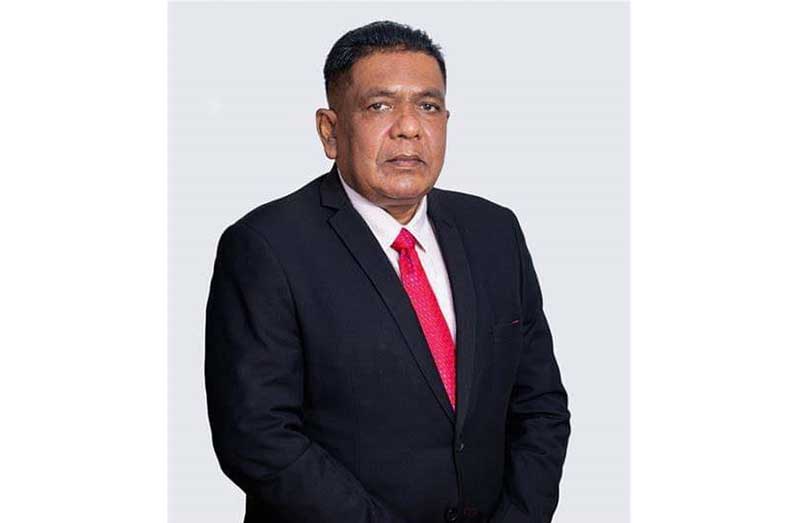youths, women’s role in Guyana’s Agricultural growth being enhanced
In a determined push to boost both traditional and non-traditional crops, Minister of Agriculture, Zulfikar Mustapha, has outlined the government’s ambitious goals for the sector. With the end of the year fast approaching, the Ministry is on track to exceed its targets, focusing not only on boosting crop production but also on creating more opportunities for both veteran farmers and a new generation of young and female farmers.
In an interview with the Guyana Chronicle, Minister Mustapha emphasized the significant investments made by President Dr. Mohamed Irfaan Ali’s administration in agriculture. He highlighted that these investments, which span infrastructure, crop cultivation, and farmer training, are already yielding results, and they aim to strengthen the country’s food security.
“We are working aggressively to achieve our agricultural programs for this year. By doing so, we’re not just enhancing food production but securing our country’s food security for the future,” Minister Mustapha said. He added that by the first quarter of next year, Guyana could become self-sufficient in key crops like black-eye peas and red beans, with hopes to start exporting by mid-2025.
The Agriculture Ministry is also building a state-of-the-art tissue culture laboratory, which will provide farmers across the country with high-quality planting materials. “We’re on track for the lab to be operational by early next year, which will allow us to roll out advanced agricultural materials to support farmers,” Minister Mustapha said. This initiative is expected to drive agricultural innovation and boost productivity across the sector.
Inclusive Agriculture
Minister Mustapha shared that the government’s agricultural development initiatives are part of a broader vision to build an ecosystem that includes infrastructure development, increased food production, market linkages, and greater participation from youth and women. “President Ali’s goal has always been to leave no one behind,” Mustapha explained. “We are making sure that agriculture becomes an inclusive sector where everyone—regardless of age or gender—can contribute and thrive.”
Reflecting on progress since 2020, Mustapha noted that one of the key goals has been to get more youth and women involved in agriculture. In 2024, this vision has been realized, with President Ali mandating that 35 percent of all agricultural projects must include young people and women. “The enthusiasm from young people and women in agriculture is truly encouraging. It motivates us in the ministry and the government to keep expanding opportunities for all Guyanese,” Mustapha added.
Transforming Guyana’s Agricultural Landscape
The government’s commitment to the agricultural sector was further underscored in a mid-year report presented by Dr. Ashni Singh, Senior Minister in the Office of the President with Responsibility for Finance and Public Service. According to the report, $28.9 billion of the $97.6 billion allocated to the Ministry of Agriculture has already been invested in developing the sector during the first half of 2024.
Key initiatives include the construction of 75 new shade houses designed for high-value crops such as bell peppers, lettuce, and broccoli. These shade houses, built in collaboration with the private sector, use hydroponic farming methods and have benefitted 43 farmers so far. Additionally, over 2,000 hectares of land have been converted for sugar cane cultivation at the Rose Hall, Albion, Blairmont, and Uitvlugt Estates, ensuring that Guyana’s sugar industry continues to expand. A sugar dryer budgeted at $60 million is also scheduled for installation by the end of the year to improve sugar quality and production.
The rice industry has seen similar success, with a 19.8 percent increase in production compared to last year. The Guyana Rice Development Board (GRDB) invested $526.5 million to support rice farmers through technical services, training, and the introduction of new technologies that have lowered operational costs while increasing productivity.
Minister Mustapha also highlighted progress in the coconut industry, where $60.7 million has been invested in the past six months. Approximately 13,000 hybrid seed nuts were imported from Brazil, accelerating the expansion of large-scale coconut farming in the country.
As Guyana continues to ramp up agricultural production and exports, the government remains committed to positioning the country as the “food basket of the Caribbean.” With ongoing investments in large-scale farming, farmer training, and infrastructure improvements, the nation is playing a critical role in CARICOM’s goal of reducing its US$5 billion food import bill by 25 percent by 2025.
“Guyana’s economy is deeply rooted in agriculture, which generates thousands of jobs and significantly contributes to our GDP,” Minister Mustapha stated. “Our agricultural sector is essential for ensuring local food security, but it’s also vital for positioning Guyana as a leading food producer for the region and beyond.”
With further plans for growth, including the inclusion of more youth and women in the sector, and enhanced infrastructure to support market linkages, Guyana’s agricultural future looks bright. “As we push towards achieving these ambitious targets, we’re confident that agriculture will remain at the heart of Guyana’s development story,” Minister Mustapha concluded.



